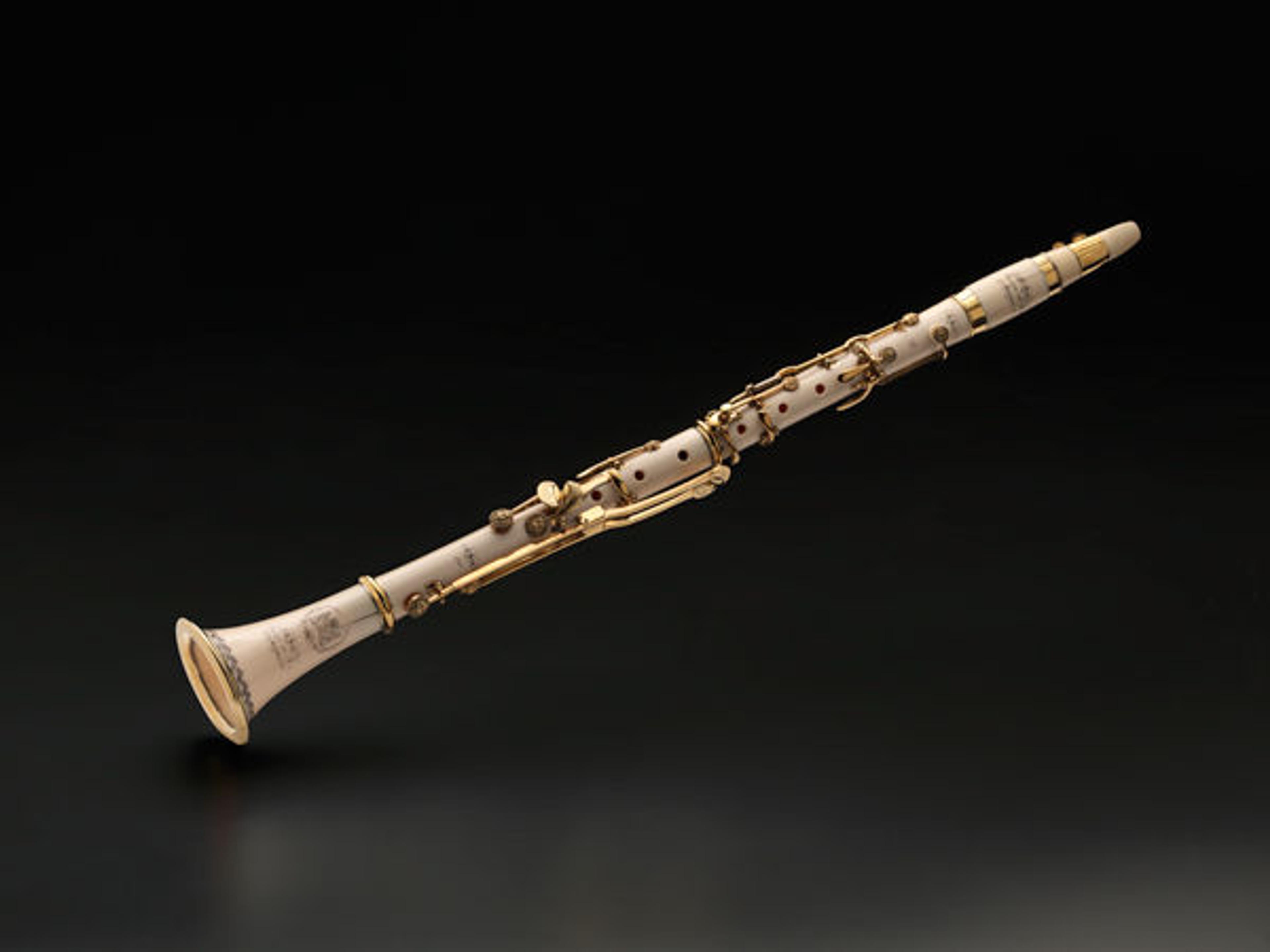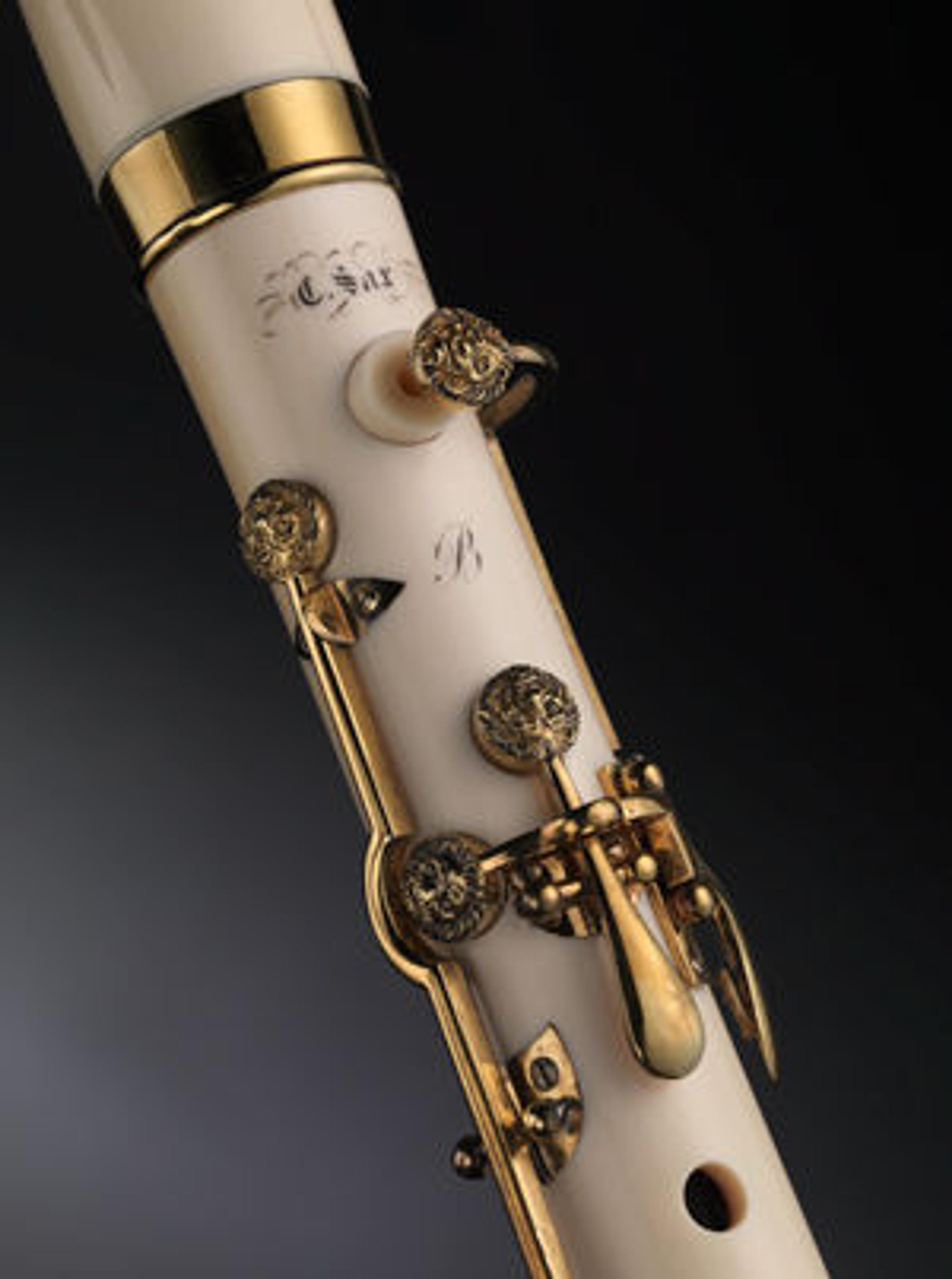Fit for a King: An Ivory Clarinet by Charles Joseph Sax

Charles Joseph Sax (Belgian, 1790–1865). Clarinet in B-flat, 1830. Ivory, brass. The Metropolitan Museum of Art, New York, Funds from various donors, 1953 (53.223)
«The name Sax is usually connected to Adolphe Sax, the man who achieved immortality with the creation of the saxophone, an instrument he invented around 1840 and patented in 1846. An outstanding and rare example of an ivory clarinet in the Met's collection, however, draws our attention to Charles Joseph Sax, Adolphe's father.»
The story begins in a small Belgian town called Dinant—located on the banks of the river Maas, in an area which belonged to France in the early nineteenth century. After the Viennese Congress of 1815 the county was added to the "United Kingdom of the Netherlands," and only after the revolution of 1830 was it part of the emerging state of Belgium.
Charles Joseph Sax (1790–1865) was a wood turner who also worked in a firm that produced spinning machines. In 1813 he married Marie-Joseph Masson (1791–1861), and the following year their first son, Antoine Joseph (later called Adolphe), was born. Self-taught in manufacturing musical instruments, Charles Joseph Sax established his own business in Brussels shortly after the birth of Adolphe. At that time the country was split between Flemish- and French-speaking populations, and the capital alternated annually between Brussels and The Hague. Charles Joseph opened his business near the well-established and famous Brussels opera house in the Rue L'Evêque, where he began making flutes, serpents, bassoons, and clarinets. His instruments soon attracted notice and he was appointed the instrument supplier to the court of Wilhelm I in 1818, as well as being commissioned to supply instruments to newly formed Dutch army regiments.
Sax also turned his attention to brass instruments and patented a cor omnitonique (omnitonic horn) in 1824 that was praised by the influential music critic François-Joseph Fétis as the best orchestral horn of the time. Forward-thinking study and application of acoustic principles was essential to the success of Charles Joseph's instruments and gave him an edge over competitors who were still basing their work on various trial-and-error methods. He placed a particular emphasis on making instruments with superior intonation—an aspect of design that was very influential to his son Adolphe.
All of Charles Joseph's talents are clearly demonstrated in this exquisite clarinet that features the use of two precious materials: the instrument's body is made of ivory, and both the key work and the ferrules are gold-plated. Its technical attributes are equally impressive, clearly demonstrating that it was not simply meant as a display piece. The key system is based on the revolutionary clarinet model which the distinguished virtuoso Iwan Müller presented in Paris in 1812. While virtuosos of the time were required to have separate clarinets in A, B-flat, B, C, D, and E-flat in order to be able to play in all keys, Müller offered them one single instrument with thirteen keys. Through this system, featuring additional tone holes that were covered by additional key work, Müller's so-called "clarinette omnitonique" made it possible to play in all keys.
Left: Detail view showing the key heads cast as lion's heads

Sax's clarinet not only offered the most modern key system of the time, but also included more up-to-date improvements such as the rollers between the bascule keys, which are operated by the little finger of the left hand. These rollers had been invented just a few years beforehand and enable the player to glide with ease between the two keys, an attribute which can still be found on modern German-system clarinets. Sax emphasized the significance of these newly developed roller keys by elaborately engraving them with leaves.
The position of the speaker tone hole, which allows the clarinet to play in the upper register, is also very technically sophisticated. Normally placed on the back of the instrument, Sax instead featured it on the front of the clarinet. This avoided the accumulation of condensation inside the speaker tone hole, which would disrupt its proper function and therefore affect the tone of the instrument. The tube that lines the speaker tone hole had also been very thoughtfully designed: Instead of projecting into the bore of the instrument, as is usual, Sax fashioned it as a small chimney on the instrument's exterior, which makes the speaker key more effective and reliable.
These modern features, as well as the lavish decoration of the instrument—all key heads were cast in the likeness of lion's heads—suggest that this clarinet was built for a special exhibition, a particular occasion, a virtuoso player, or an aristocratic patron. The decoration culminates in the inscription on its bell, where Charles Joseph presented himself proudly as the king's instrument maker by depicting the coat of arms of the Kingdom of Netherlands and the motto of the Orange family, "Je Maintiendrai."
This instrument can be seen in the exhibition Celebrating Sax: Instruments and Innovation, on display in gallery 682 of The André Mertens Galleries for Musical Instruments through April 30, 2015. Rare saxophones, brass instruments, and this exquisite ivory clarinet are among the twenty-six instruments selected to showcase the innovative work of the Sax family.
Heike Fricke
Heike Fricke was formerly a curatorial fellow in the Department of Musical Instruments.